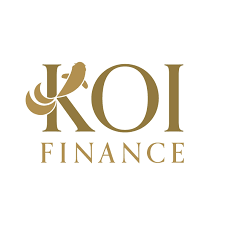Koi Finance
The Largest Zksync Era-Built Zkrollup Defi Platforms

Introduction
Koi is one of the most extensive zkRollup DeFi Platforms that was constructed using zkSync Era. On a single, community-driven, decentralized platform, you may invest and trade, receive yields, and take part in bond transactions. Take advantage of the safety offered by Ethereum without having to pay exorbitant gas prices.
Depositories of Funds
Koi was developed to have a dynamic configuration for Liquidity Pools, which allows for the utilization of both AMM curves that are stable and those that are normal.
Consistent Pool- Securities whose values fluctuate within a narrow range (for example, USDC/DAI)
Everyday Pool- Items whose prices do not move in tandem (for example, ETH/WBTC).
It is possible to have a Normal pool and a Stable pool associated with the same assets. Koi will discover the transaction that offers the greatest price regardless of the sort of pool at hand.
Safe Pools
Stable pools are created for assets that are expected to move within a narrow price range. Trades with a large volume can take advantage of capital-efficient swaps. Be careful to establish the correct pricing for these pools since once they are created, the trading price stays a tight spread.
The Common Pools
In regular pools, you’ll find assets with adjustable pricing that aren’t linked to one other. These pools use a standard AMM algorithm to most trading pairings. Forex pairs are traded in these pools.
Interactive Pools
The LP costs for creating pools in Koi range from 0.01% to 10% for standard pools and 2% for stable pools. These costs can only be modified through the LP governance system after they are set upon pair creation. This cost can be changed at any time by an LP provider or delegated provider with 50%+ vote weight. When adjusting the pool fees, a 0.1% cost is applied to the total votes in order to avoid system gaming. Since this is the case, flash loans cannot undergo charge structure changes without sustaining some kind of loss.
Administrative authority
Koi has an LP governance and delegation structure already built in. In addition to enabling dynamic fees in any LP pool, this also makes it possible to construct complicated protocols atop the Koi protocol.
LP pools charge LP fees upon pair formation. LP providers can set pool creator costs from 0.1% to 10%. All LPs must participate in one cost range.
A pool fee can be adjusted by an account with more than 50% of the votes under the LP governance system. LP token supply determines votes. The LP provider may outsource their ‘votes’ to another provider, allowing parties to advocate for delegates and increase their pool weight.
One reason Mute chose this design over a multi-fee pool is because the pool with the deepest liquidity will always be traded on. One pool of liquidity and a governance structure with dynamic fees are best.
Protocol Costs
The protocol includes two fees:
Adaptable (as a percentage of the investment pool fees)
Predetermined (a predetermined percentage of total trade)
LP providers get no trade fees if the protocol fixed charge exceeds LP pool costs. Protocol At start, fixed fees will be utilized until LP TVL grows sustainably.
The veKOI
Governance and DAO
It is a locked-based voting system that is built on a ve NFT model called veKOI (voting Escrow Locked Koi). The native Koi token, KOI, serves as a utility that unlocks accessibility into the Koi Decentralized Autonomous Organization (DAO). After the lock time for this veNFT has passed, it is possible to transfer it, sell it, and finally burn it for the underlying koi you hold.
The holders of KOI are required to lock their KOI for a length of time ranging from seven to seven hundred twenty-eight days in order to obtain a new non-fungible token (veKOI) as a reward. Individuals who lock their Koi in exchange for a veNFT are eligible to get this veKOI NFT, which is a bespoke NFT. Three significant metadata variables are stored in the NFT:
- Koi Amount locked (for redemptions)
- Weight of total votes
- Data expiration
Once the lock period ends, you have the option to either keep onto your veKOI, redeem and burn your NFT to return your KOI balance to its original amount, or redeem and re-up for a different timeframe.
Allocation of Tokens
These figures will be revised when tokens are distributed, vested, and unlocked.
- Prev. Mute token swap and circulation: 50%
- Ecosystem Rewards: 30%
- Reserved Future Investors: 7%
- DAO: 6%
- Reserved Future Advisors: 4%
- Investor/Adviser (12–18 month vests): 3%
For more information visit:
AUTHOR
Bitcointalk Username: Lee jhon
Bitcointalk Profile: https://bitcointalk.org/index.php?action=profile;u=3398617;
Telegram Username: @leejhony
Wallet: 0x7C39aa3F4ABaEd6A9625C1878237dc575A456f2E
Komentar
Posting Komentar